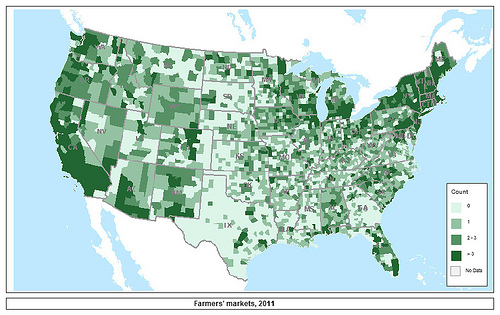On October 16, World Food Day, it is hard to not be struck by how lucky we are in the United States. We have abundant food that costs us less to produce, on a per unit basis, than almost any other country in the world. Our farmers and ranchers produce more than we need, allowing us to be a powerhouse in global exports. And our food supply is among the safest of all the world’s nations.
All that abundance and security has been underpinned by science and know-how. Between the 1940s and the 1970s, agriculture science blossomed in what has become known as the Green Revolution. Thanks to the research done by Norman Borlaug, the “Father of the Green Revolution,” working with researchers around the world, developed high-yielding varieties and modern production practices that helped save untold numbers of people from starvation. Read more »
This post is part of the Science Tuesday feature series on the USDA blog. Check back each week as we showcase stories and news from USDA’s rich science and research profile.
Organic agriculture is proving itself to be a veritable cornucopia, according to the results of the first-ever report on certified USDA organic production, which we released earlier this month. While the number of organic farms is a fraction of its conventional counterpart, an organically produced version of virtually every crop or animal product is now available in the United States.
This was the first time the National Agricultural Statistics Service (NASS) conducted this survey, which means that we cannot see trends yet, but we can already easily see some of the impacts of organic production in the United States. From four farms in Alabama, Alaska or Delaware to 1,898 farms in California, every state in the nation is now home to USDA-certified organic producers. And while these farmers make up less than a half of one percent of all U.S. farmers, they already sell more than $3.5 billion worth of agricultural products. Read more »
It’s shaping up to be a good year for students in Indian Country.
For the first time in school history, students at Saginaw Chippewa Tribal College in Mount Pleasant, Michigan can register to take physics thanks to an upgraded laboratory. And at Leech Lake Tribal College in Cass Lake, Minnesota, students were able to take trigonometry for the first time last year. Funded and supported by USDA’s National Institute of Food and Agriculture (NIFA ), both schools made improvements to bolster their students’ learning in the areas of science and mathematics.
NIFA’s Tribal Colleges Education Equity Grant is a noncompetitive program that enhances educational opportunities for American Indians in the food and agricultural sciences. These grants strengthen formal educational opportunities at the associate, baccalaureate, or graduate level at 1994 land-grant institutions, also known as tribal colleges. Read more »
This post is part of the Science Tuesday feature series on the USDA blog. Check back each week as we showcase stories and news from USDA’s rich science and research profile.
From desktops to tablets, and from floppy disks to flash drives, technology is constantly changing. Each new idea is developed in an effort to solve old problems. That’s why the White House issued a plan last year to help stimulate our nation’s economic development and create jobs by accelerating Federal science and technology (S&T) innovations.
To support that plan, USDA agencies with science research missions that develop innovations in agriculture and that support businesses that adopt innovations for commercialization will work together to foster technology transfer to support U.S. business growth. Read more »

Number of Farmers Markets per County, 2011 (darkest areas have higher numbers). More than 7,800 farmers markets have sprung up across the United States, up from roughly 1,700 in 1994.
This post is part of the Science Tuesday feature series on the USDA blog. Check back each week as we showcase stories and news from USDA’s rich science and research profile.
Interest in local and regional food systems has expanded in recent years. The evidence is everywhere: from the number of farmers markets more than doubling nationwide since 2004, to the rising popularity of “community supported agriculture” (CSA) participation, to the increasingly common sight of restaurants and retail grocery outlets stocking and promoting meat and produce from local farmers and ranchers. This consumer trend has implications for the farms that supply these markets, firms across the retail supply chain, and policy makers at the federal, state and local levels that often promote local foods in various nutrition, food assistance and community development programs. Read more »

Trees on historic survey maps were used to determine property lines (photo credit: Melissa Thomas-Van Gundy, U.S. Forest Service)
Forest restoration would be a lot easier if people who lived a couple of centuries ago could just tell us about the forest as they knew it.
For Melissa Thomas-Van Gundy, a U.S. Forest Service scientist, using original land deeds from colonial America is as close as you can get to actually being there. Based in Parsons, W.Va., Thomas-Van Gundy is using a unique digitized dataset built with original land deeds to determine what a West Virginia forest looked like before European settlement. Read more »


